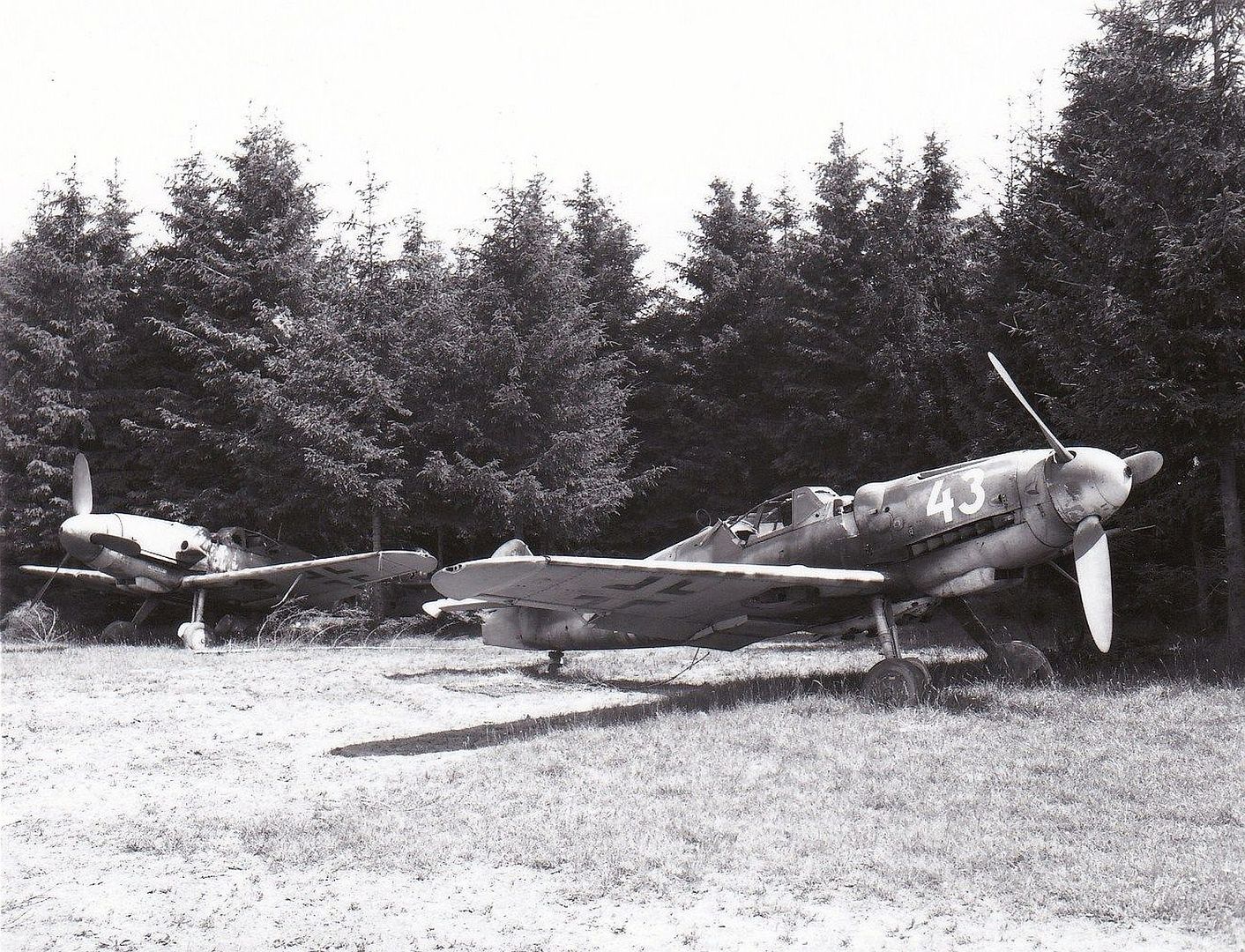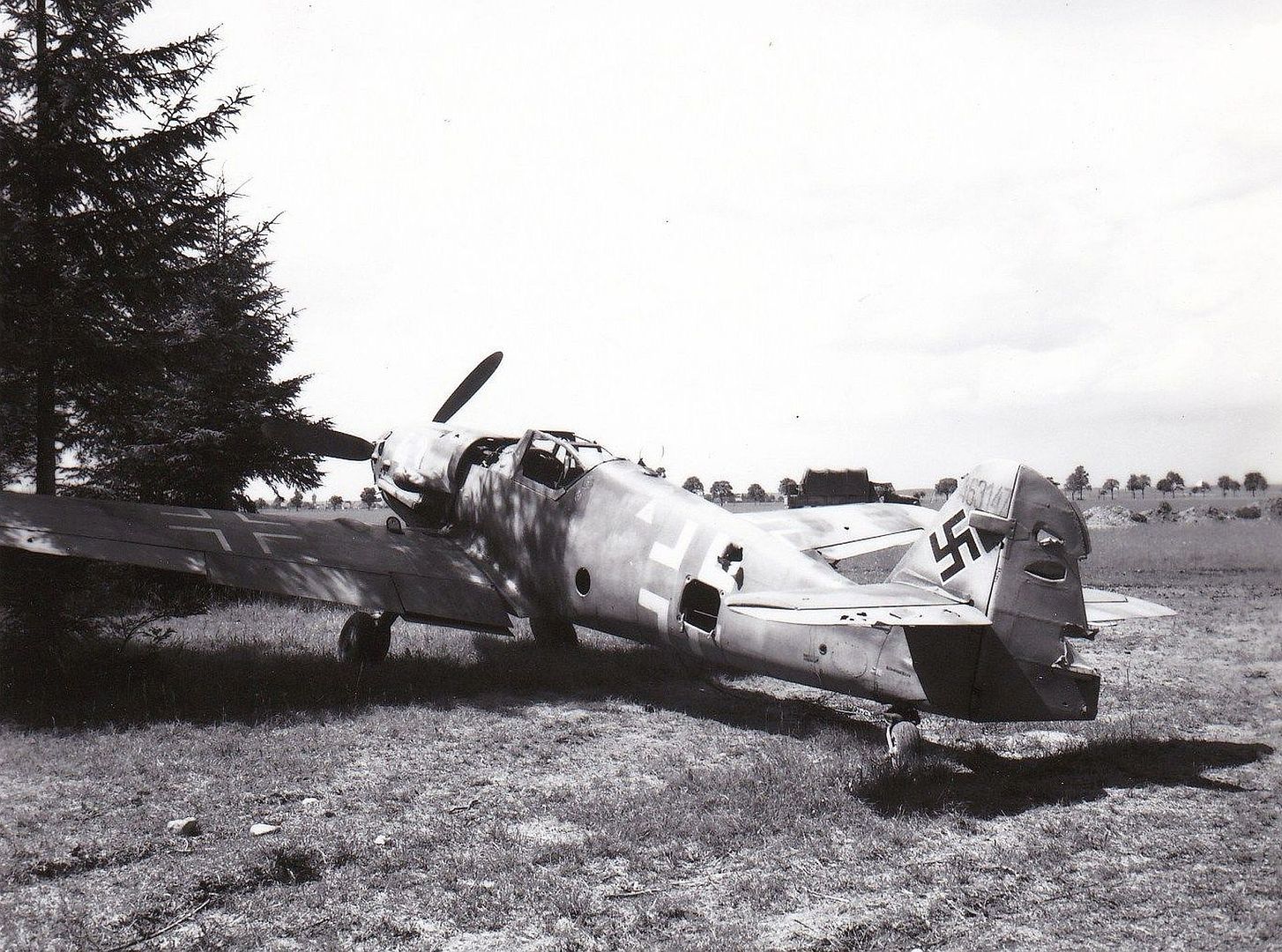Forums
- Forums
- Axis And Allies Forum
- General Discussion
- Photo of the week
Photo of the week
Post a reply
- Go to Next topic
- Go to Welcome
- Go to Introduce Yourself
- Go to General Discussion
- Go to Screenshots, Images and Videos
- Go to Off topic
- Go to Works in Progress
- Go to Skinning Tips / Tutorials
- Go to Skin Requests
- Go to IJAAF Library
- Go to Luftwaffe Library
- Go to RAF Library
- Go to USAAF / USN Library
- Go to Misc Library
- Go to The Ops Room
- Go to Made in Germany
- Go to Campaigns and Missions
- Go to Works in Progress
- Go to Juri's Air-Raid Shelter
- Go to Campaigns and Missions
- Go to Works in Progress
- Go to Skinpacks
- Go to External Projects Discussion
- Go to Books & Resources
-
 Main AdminThanks Harry,thought you would appreciate them.
Main AdminThanks Harry,thought you would appreciate them. -
 Main AdminThis midweeks photo's.
Main AdminThis midweeks photo's.
Supermarine Seafire XV from 801 Naval Air Squadron has a slight mishap on landing on HMS Implacable. Pacific theater of military operations.
And Polish pilot Kazimierz Chomacki (308 Sq) sits on the wing of his Spitfire Mk XVI fighter after an emergency landing during a training flight.
-
 Main Admin
Main Admin -
 Main Admin
Main Admin -
 Main AdminOn 28 February 1947, a P-82B named BETTY JO, the ninth production item, piloted by Lieutenant Colonel Robert Thacker (Betty Jo was his wife) and Lieutenant John Ard, set a record for unrefueled flight in a piston fighter, flying from Hickam Field in Hawaii to La Guardia Airport in New York in about 14.5 hours. This aircraft had been stripped down, modified with additional internal fuel tanks, and fitted with four oversized 1,150 liter (310 US gallon) drop tanks. The total distance covered was 7,998 kilometers (4,968 miles) and the average speed was 559 KPH (347 MPH). That was faster than the top speed of most combat aircraft at the beginning of WW II.
Main AdminOn 28 February 1947, a P-82B named BETTY JO, the ninth production item, piloted by Lieutenant Colonel Robert Thacker (Betty Jo was his wife) and Lieutenant John Ard, set a record for unrefueled flight in a piston fighter, flying from Hickam Field in Hawaii to La Guardia Airport in New York in about 14.5 hours. This aircraft had been stripped down, modified with additional internal fuel tanks, and fitted with four oversized 1,150 liter (310 US gallon) drop tanks. The total distance covered was 7,998 kilometers (4,968 miles) and the average speed was 559 KPH (347 MPH). That was faster than the top speed of most combat aircraft at the beginning of WW II.
Below on landing at LaGuardia Field New York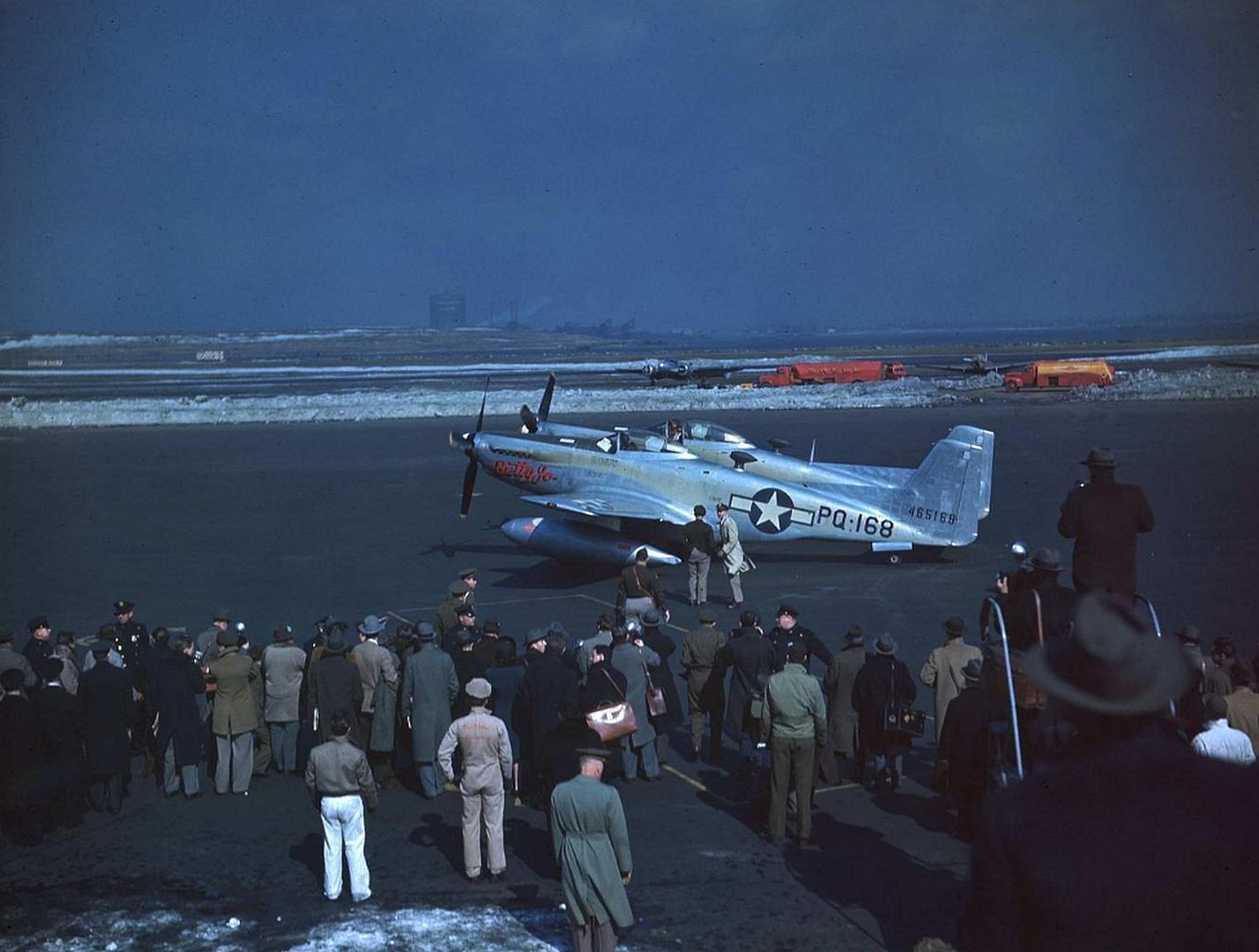
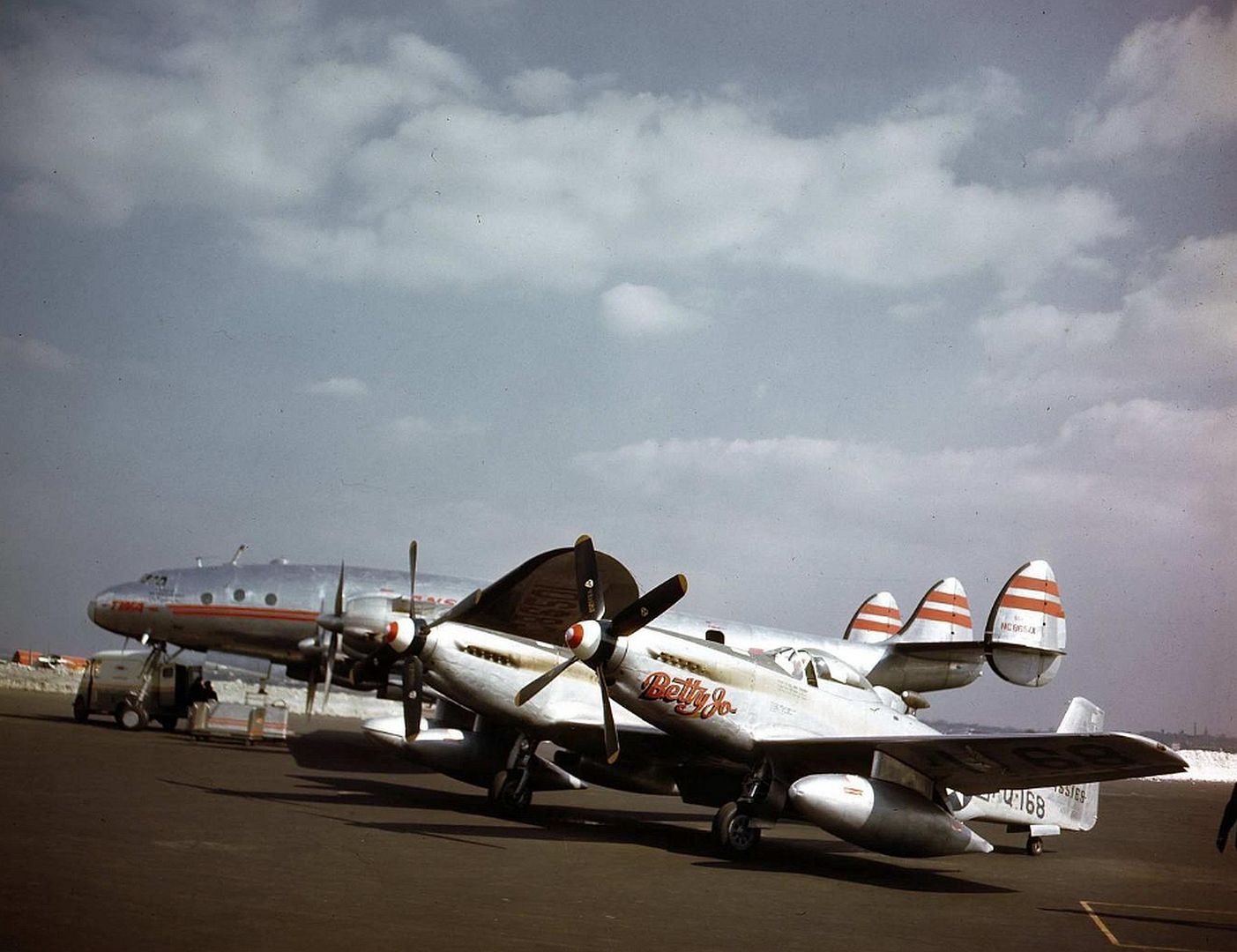
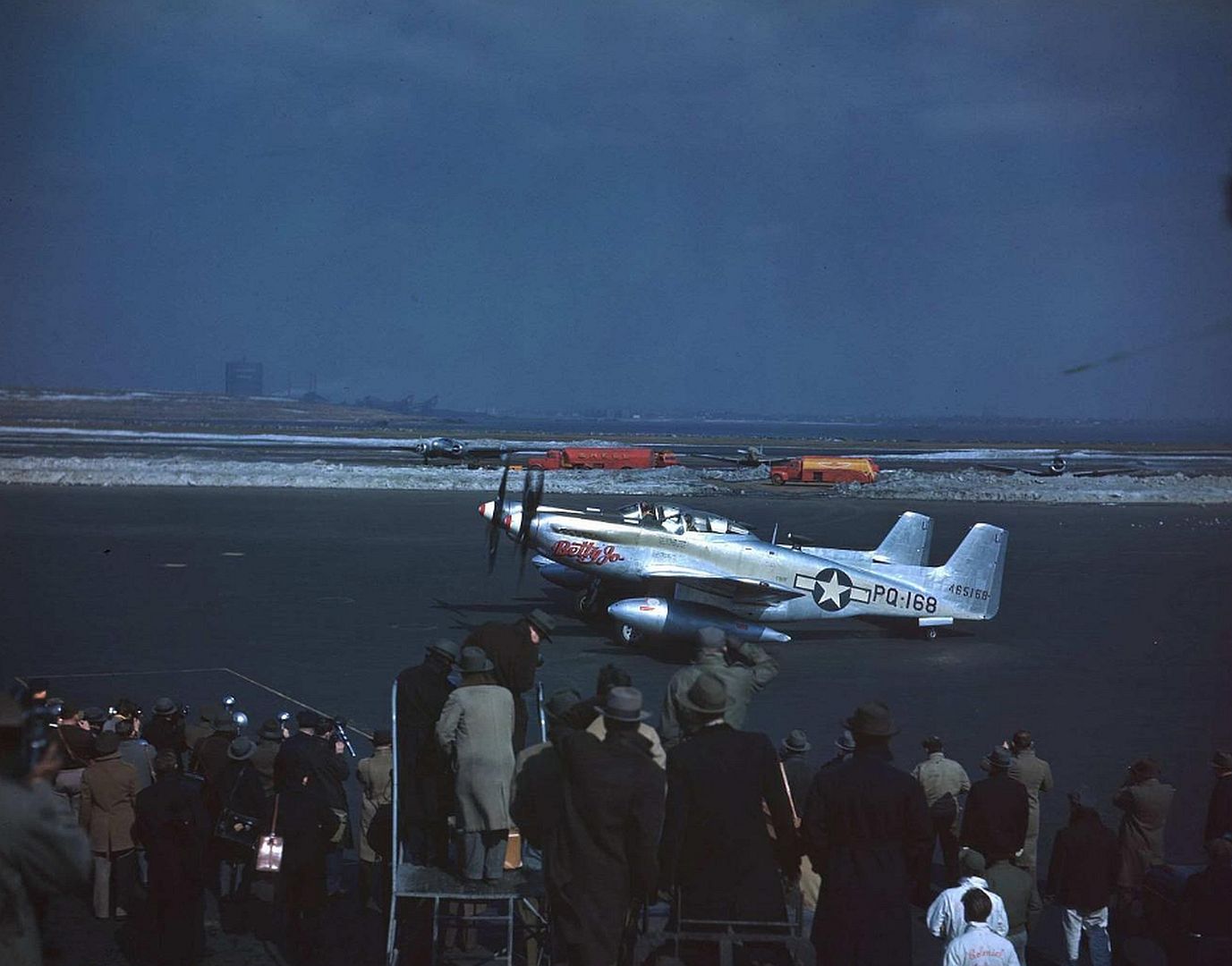
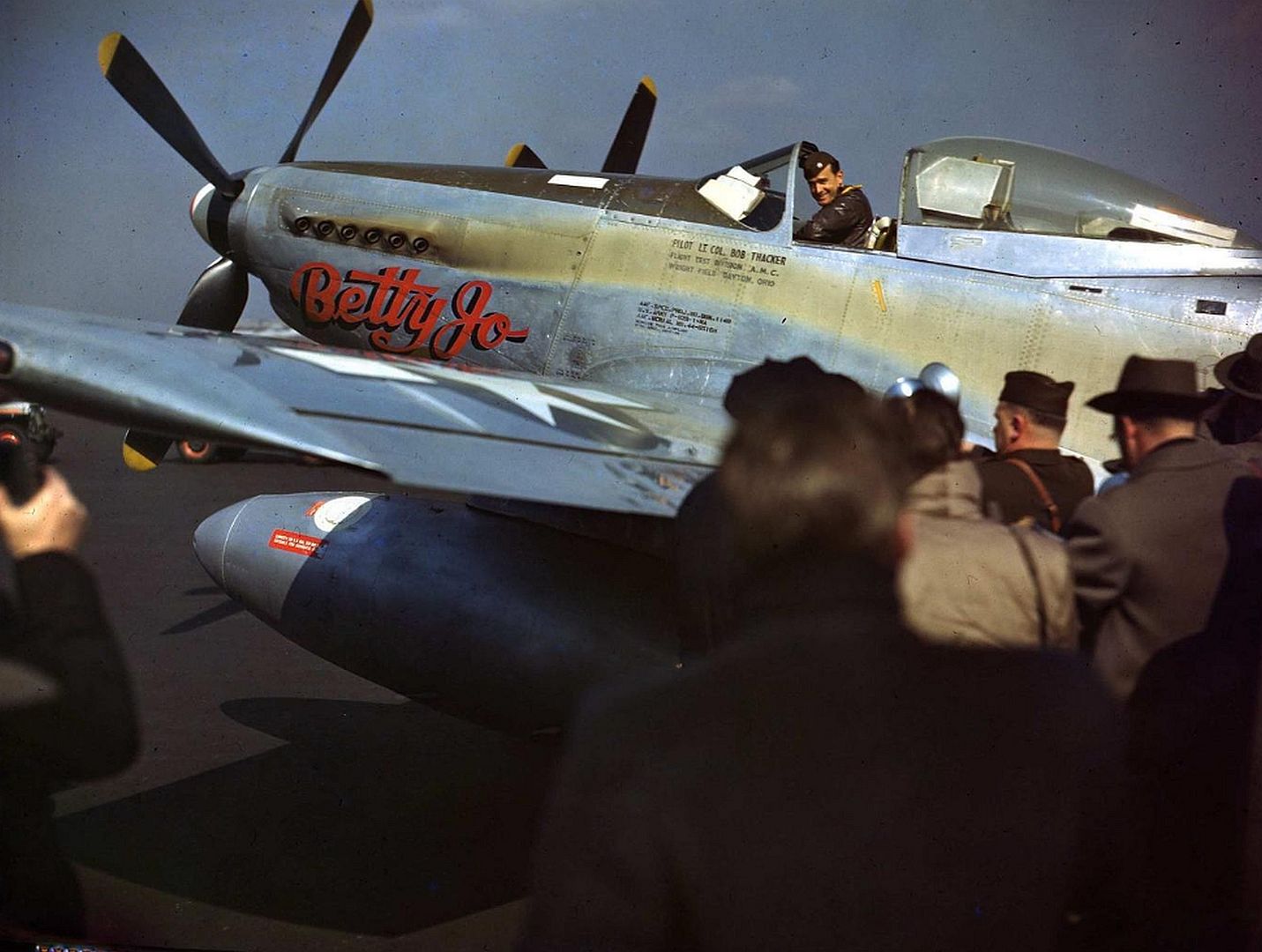
-
 Main AdminThis midweeks photos.
Main AdminThis midweeks photos.
Surrendered Japanese aircraft at Jacquinot Bay, New Britain. Mitsubishi Ki-46 Dinah in front, Zeros behind and a RAAF Wirraway in the background.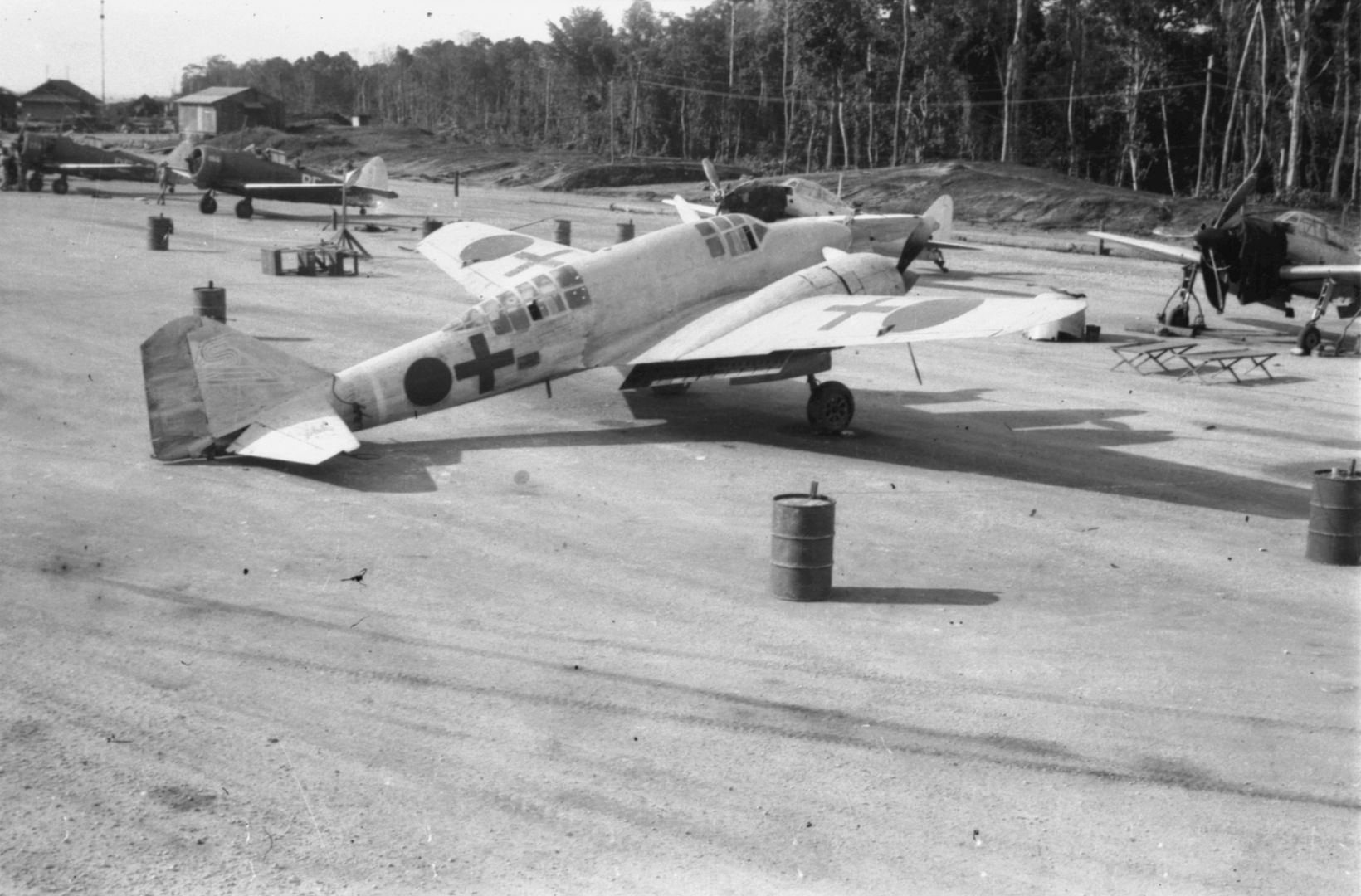
Line-up of three Japanese Mitsubishi A6M5 Reisen - Zero Fighters with their engines running about to fly to Jacquinot Bay
Unknown RNZAF Flight Lieutenant with a Japanese Mitsubishi A6M3 Zero. Kara, Bougainville.
This aircraft was later flown to Piva, Bougainville by Wing Commander WR Kofoed.
This aircraft is now preserved at the Auckland War Memorial Museum.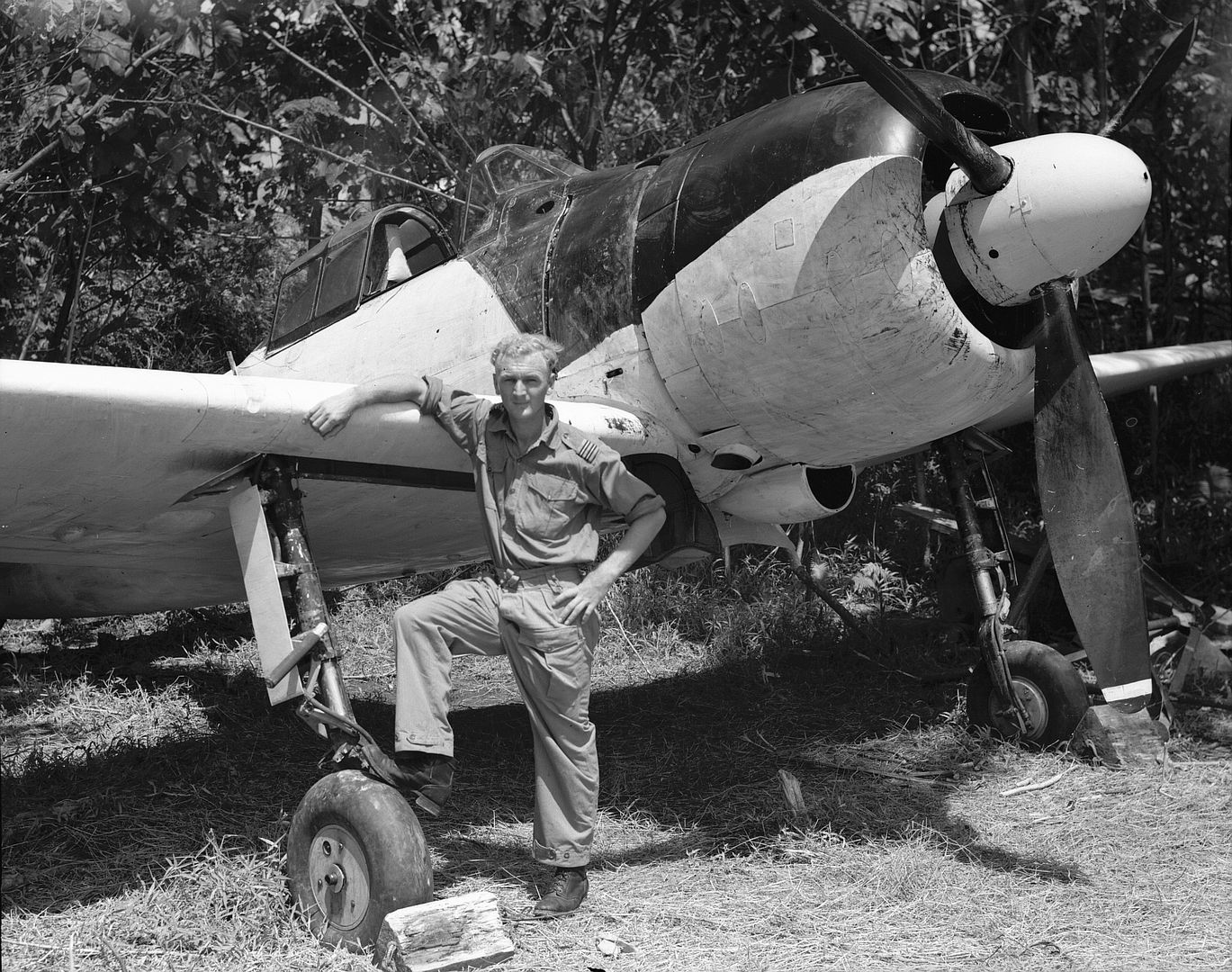
RNZAF personnel inspect a Japanese Mitsubishi A6M3 Zero fighter. Piva, Bougainville.
This aircraft was found in serviceable condition at Kara, Bougainville and was flown to Piva by Wing Commander WR Kofoed.
Air Commodore GN Roberts (right) and Wing Commander WR Kofoed with a Japanese Mitsubishi A6M3 Zero fighter. Piva, Bougainville.
This aircraft was found in serviceable condition on Kara airstrip, Bougainville and flown to Piva by Kofoed.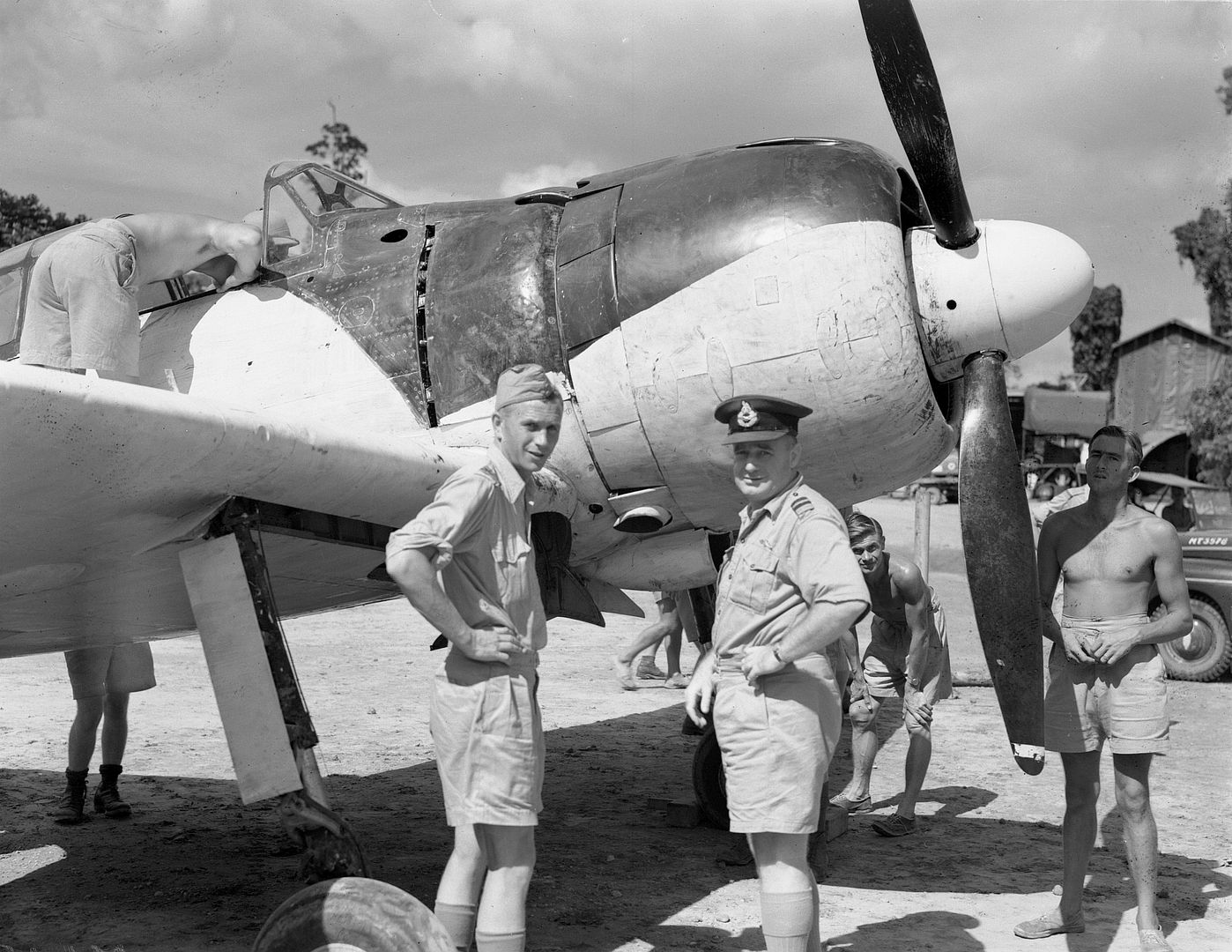
RNZAF personnel working on a Japanese Mitsubishi A6M Zero. Jacquinot Bay.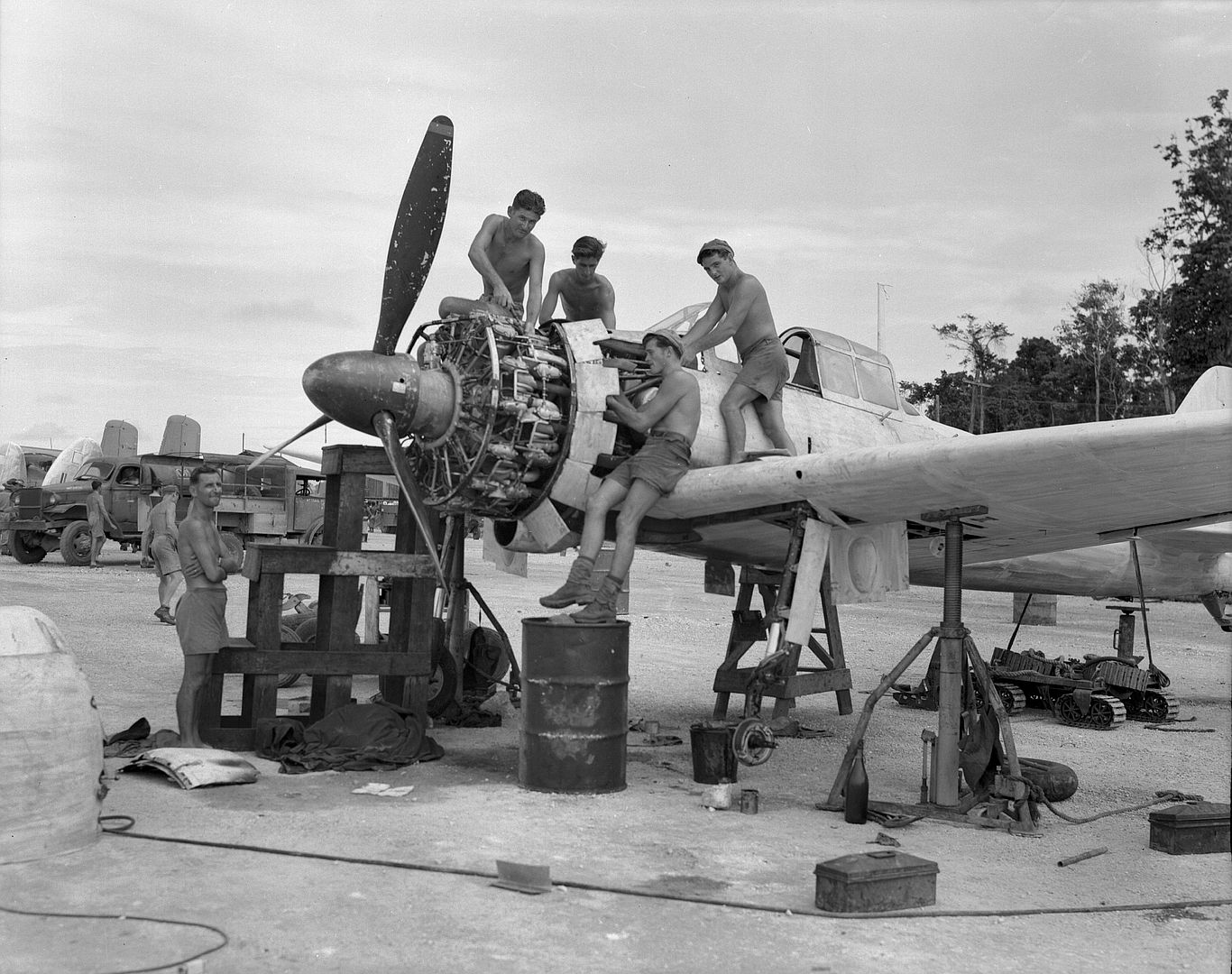
-
 Main Admin
Main Admin -
 Main Admin
Main Admin -
 Main Admin
Main Admin -
3 years agoSat Aug 29 2020, 08:42pm
 Main AdminThis weekends photos..
Main AdminThis weekends photos..
Boeing B-17F-70-BO, s/n 42-29782. This particular aircraft was completed at the Boeing Plant 2 south of downtown Seattle, Washington, and accepted by the U.S. Army Air Forces on February 13, 1943 (to protect the plant from possible air attack, the U.S. Army Corps of Engineers built houses of plywood and fabric and installed fake streets to camouflage the roof). It was immediately flown to the United Air Lines Modification Center at Cheyenne Regional Airport in Wyoming and modified as a TB-17F trainer, and assigned to the 7th Bomb Squadron, 34th Bomb Group at Blythe Field, California (which was training replacement crews for overseas deployment).
After about 500 hours of flying time, in May of 1943, it was sent to the the Sacramento Air Service Command at McClellan Army Air Base for an overhaul. On June 15, 1943, it was transferred to the 593rd Squadron, 596th Bomb Group at Moses Lake Army Air Base in Washington state. At least some sources say it was in England sometime between January and March 1944 but did not see combat (one source indicates that the aircraft?s destination was listed as ?SOXO? which was the overseas destination code for the 8th Air Force in England and would be listed on the Individual Aircraft Record Card (IARC); and the newer B-17G variants were arriving for combat duty so there is some question as to the purpose of the move to England).
It was at Drew Field in Tampa, Florida with the 396th Bomb Group, and was withdrawn from service November 5, 1945. It was then shipped to the federal government's Reconstruction Finance Corporation's bone yard at Altus, Oklahoma. for disposal. However, in 1946, stripped of guns and turrets, Pete Moll of Stuttgart, Arkansas, obtained the aircraft for $350 and it was displayed as a war memorial in a park with a natural metal finish so at some point it had been stripped of its standard olive drab and neutral grey paint scheme, and with the nose art "Great White Bird". But the Stuttgart city government got tired of the display and though still technically the property of the U.S. government, the city counsel sold the aircraft to a local man by the name of Gerald C. Frances in 1953, who removed the B-17 from the park.
On April 23 of the same year, the B-17 was again sold, this time to brothers Max and John Bergert for $20,000 and converted to an aerial sprayer (for, among other things, DDT), and on November 25, 1953, it was assigned a new civil registration number of N6015V, but the registration was changed to N17W five months later at the request of the Bergerts. N17W also flew as a fire bomber, and during its 25 year career of fire fighting, it wore numerous paint schemes and call signs including E84, C84, C44, and 04 (see photo), and and appeared in such films as "1,000 Plane Raid" and "Tora! Tora! Tora!" and the 1989 version of "Memphis Belle" (in that film, it appears as 41-24848, code DP-Y "Kathleen" although it was painted with one scheme on the left side and another scheme on the right side and is reportedly the only genuine B-17F used in filming).
For a time, it was either owned by or leased to Richard ?Dick? Baxter of Central Aircraft (formerly Central Airways) in Yakima, Washington (he was a large part of Pacific Northwest small-aircraft history and was instrumental in the origination of the Arlington Air Show in Washington and volunteered his expertise and time over the years to such organizations as the Museum of Flight). Robert "Swage" Richardson of Seattle had purchased the aircraft in 1984-85 and relocated the aircraft to the Museum of Flight in Seattle, Washington (MOF), where military-style markings were applied over the bare aluminum surface and authentic top turret was added along with a false ball turret; he wanted to give it the nose art "Rain Maker" and had a mock-up made of the design (see photo). Richardson, at the time the owner of University Swaging Co. (an aircraft components manufacturer and now part of Precision Castparts Corp.'s Engineered Products Division) and well-known for his aircraft restorations, crisscrossed the country flying this aircraft at air shows. He flew the aircraft to England for the the filming of ?Memphis Belle? in 1989, the aircraft spent some time in Geneseo, New York. In accordance with Richardson?s will, upon his death in 1990, ownership was transferred to the Museum of Flight .
The MOF Restoration Center began restoration to its current configuration in 1991. Since nearly all the military equipment had been removed from the aircraft during its civilian life (also, bug spraying chemicals had caused serious corrosion, windows leaked, hoses and oil tanks were cracked and dripping, holes had been cut into the bulkheads), approximately 98 percent of the original military equipment was reinstalled and about 95 percent of that is actually operational. It was restored to flying condition and did fly on occasion since its return to Seattle, but will not be flown as is the case with the collection at MOF.
Below taken at Kamloops Airport British Columbia ca 1960

And below at Cranbrook Airport, British Columbia after a landing mishap ca 1960

Post a reply
- Go to Next topic
- Go to Welcome
- Go to Introduce Yourself
- Go to General Discussion
- Go to Screenshots, Images and Videos
- Go to Off topic
- Go to Works in Progress
- Go to Skinning Tips / Tutorials
- Go to Skin Requests
- Go to IJAAF Library
- Go to Luftwaffe Library
- Go to RAF Library
- Go to USAAF / USN Library
- Go to Misc Library
- Go to The Ops Room
- Go to Made in Germany
- Go to Campaigns and Missions
- Go to Works in Progress
- Go to Juri's Air-Raid Shelter
- Go to Campaigns and Missions
- Go to Works in Progress
- Go to Skinpacks
- Go to External Projects Discussion
- Go to Books & Resources



